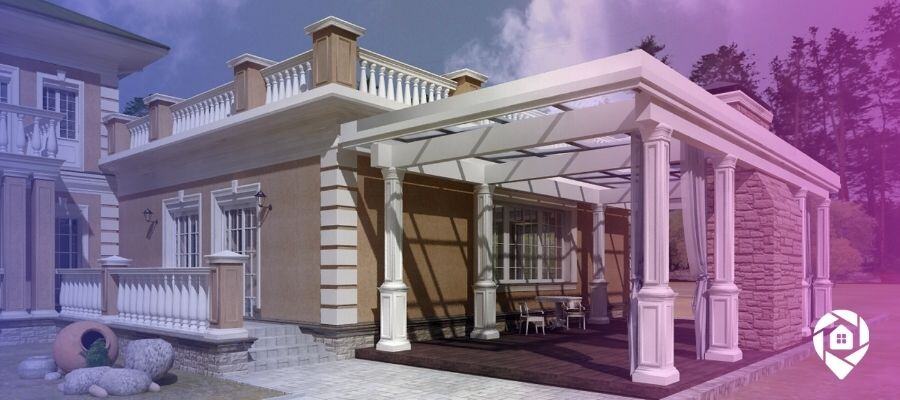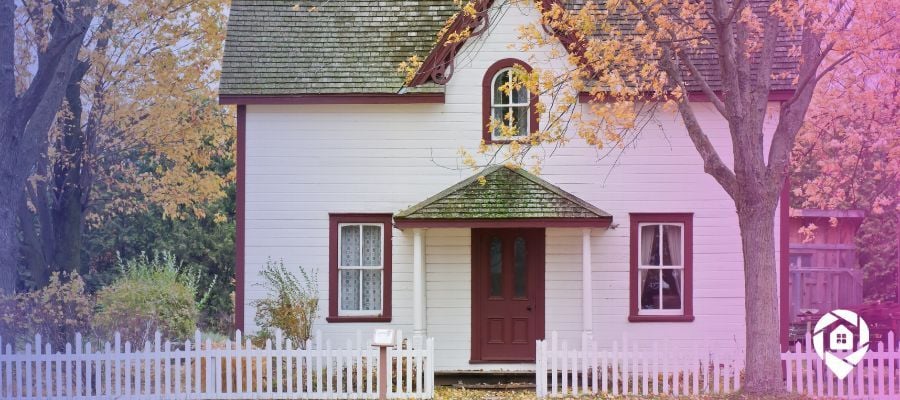
A Comprehensive Guide to Accessory Dwelling Units

We've all heard the saying, "Don't put all your eggs in one basket." This applies to a variety of areas in life, including real estate investing. One way investors are diversifying their portfolios these days is by investing in alternative types of housing. That's where Accessory Dwelling Units, or ADUs, come into play.
ADUs, often referred to as "granny flats" or "in-law units," represent a unique opportunity for investors to maximize their property's potential without necessarily needing to acquire additional land. These living spaces can be an affordable housing solution, providing additional cash flow and increasing the overall investment value of your primary residence.
What is an ADU?
An Accessory Dwelling Unit (ADU) is a smaller, independent residential dwelling unit located on the same lot as a stand-alone (i.e., detached) single-family home. ADUs can be incorporated into an existing home (like a basement ADU), attached to the existing home (like a garage conversion) or an entirely separate structure (like a backyard cottage).
Why Investors are Adding ADU
With the skyrocketing costs of housing and a shortage of affordable options in many areas, building or rehabbing an ADU has become an appealing solution to many investors. They are cost-effective, efficient, and can generate significant income from rental or even resale.
The Financial Benefits of ADUs
As a real estate investor, your goal is to build wealth over the long term. One major aspect of this is improving cash flow with steady rental income. By adding an ADU to your property, you're essentially turning a single rental property into a multi-unit property, which can drastically increase your monthly earnings. In addition to the potential of providing instant cash flow, ADUs could also increase the overall property value, giving you a bigger return on investment when it comes to selling your home.
Types of ADUs
When considering the addition of an Accessory Dwelling Unit (ADU) to your property, it's essential to understand what types you have to pick. Each type of ADU offers unique benefits and considerations, making it crucial to select the one that best suits your property's layout, your budget, and your investment goals. Here are the primary types of ADUs:
1. Detached ADUs
Detached ADUs, also known as backyard cottages, are stand-alone structures built separately from the main house. These units offer a high degree of privacy for both the main house residents and the ADU occupants. They typically require more land and a higher initial investment due to construction costs, but they also bring in higher rental rates. Detached ADUs are ideal for properties with ample yard space and for investors looking to maximize rental income while maintaining clear boundaries between living spaces.
2. Attached ADUs
Attached ADUs are extensions built onto the existing structure of the primary residence. Common forms include garage conversions, additions to the side or rear of the house, or constructing a new story on top of an existing structure. Attached ADUs often benefit from shared utilities and infrastructure with the main house, which can reduce construction and maintenance costs. This type of ADU can be particularly advantageous for properties with limited yard space but sufficient building footprint to expand upon.
3. Interior ADUs
Interior ADUs, such as basement or attic apartments, involve converting existing interior space within the primary residence into a separate living unit. These ADUs are typically the most cost-effective to create since they utilize the existing building shell and infrastructure. However, they offer less privacy compared to detached or attached units, as the ADU shares walls and possibly entrances with the main home. Interior ADUs are an excellent option for properties with unused or underutilized interior space that can be repurposed for additional living quarters.
4. Garage Conversions
A subset of attached ADUs, garage conversions transform an existing garage into a livable space. This option is particularly appealing in urban areas where additional land is scarce. Converting a garage can be a cost-effective way to add an ADU without the need for new construction, although it does mean sacrificing vehicle storage. Garage conversions can offer a good balance of privacy and cost savings, making them a popular choice among urban investors.
If you are looking for an alternate form of real estate investing to make money than having someone dwell in a garage conversion, there are other things you can convert them into. Consider a filming space or studio conversion that you rent out.
5. Over-the-Garage Units
Over-the-garage units involve constructing a new living space above an existing garage. This type of ADU leverages vertical space, which can be particularly useful in dense urban areas where horizontal expansion is not feasible. Over-the-garage units provide a separate entrance and more privacy compared to traditional attached ADUs especially if the garage is detached from the main house, and they can enhance the overall property value significantly.
Selecting the appropriate type of ADU depends on many factors including your property’s layout, local zoning regulations, budget constraints, and investment goals. Detached ADUs offer privacy and higher rental potential, while attached and interior ADUs can be more cost-effective and space-efficient. Understanding the nuances of each ADU type will help you make an informed decision that aligns with your real estate strategy, ultimately enhancing your investment portfolio through diversified, profitable housing options.
Legal and Zoning Considerations
Before diving into adding an ADU to your property, it's important to note that not every city has the same regulations when it comes to building and renting ADUs. Prospective investors need to thoroughly research their city's specific zoning and construction laws since these can greatly affect the potential profitability of an ADU. Again, different municipalities have different rules for ADUs and even sometimes short-term rentals. This is something determined often at the city level and not the state level.
Conclusion: Rethinking Traditional Real Estate Investing
The modern real estate market is evolving, and as a smart real estate investor, adapting to these changes is crucial to maximize profits. Investing in ADUs is becoming a valuable strategy. The affordable housing they provide, coupled with the ability to generate additional cash flow, makes ADUs an excellent real estate investment opportunity. Additionally, the added benefits of potentially increasing the overall value of the property could result in even higher profits in the long run.
To truly reap the benefits of investing in ADUs, thorough research coupled with a solid understanding of the local real estate market conditions is mandatory. More importantly, aligning yourselves with professionals having a deep understanding of the ADU market can accelerate your real estate investing journey.

About Samantha Ankney
Samantha is the Social Media Manager at DealMachine, where she oversees all social media strategies and content creation. With 4 years of experience at the company, she originally joined as a Media Specialist, leveraging her skills to enhance DealMachine's digital presence. Passionate about connecting with the community and driving engagement, Samantha is dedicated to sharing valuable insights and updates across all platforms.



